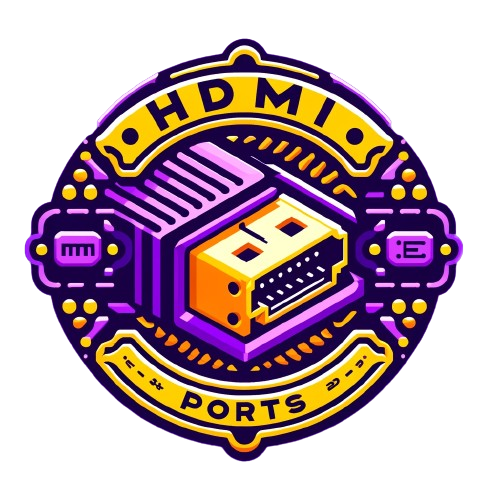Introduction
Counterfeit HDMI cables have become a concerning issue in Taiwan. Recently, police seized $2.6 million worth of counterfeit HDMI cables, comprising of 3,037 different cables. What many people may not know is that HDMI is not just an industry standard, but also a registered trademark. Selling products that use HDMI technology and branding requires a licensing fee. Unfortunately, many online sellers are unaware of this requirement.
The HDMI Association has been actively campaigning to raise awareness about this issue and promote the use of anti-counterfeiting labels. These labels utilize patterns, holographs, and QR codes to distinguish genuine HDMI cables from counterfeit ones. It has been reported that counterfeit HDMI cables worth over $128 million were sold in Taiwan between 2022 and August 2023. This poses a significant risk, as these counterfeit cables lack proper standardization and can become a fire hazard.
To tackle this problem, it is crucial to educate both sellers and consumers about the importance of purchasing authentic HDMI cables. The incorporation of anti-counterfeiting labels can provide a visual indication of the cable’s authenticity. By being vigilant and supporting the use of licensed products, we can help ensure the safety and reliability of HDMI cables in the market.
The Scope of the Counterfeit HDMI Cable Problem
Counterfeit HDMI cables have become a widespread issue in Taiwan, with recent seizures of $2.6 million worth of counterfeit cables. In total, 3,037 different cables were confiscated, highlighting the scale of this problem.
Statistics reveal that between 2022 and August 2023, over $128 million worth of counterfeit HDMI cables were sold in Taiwan. This staggering figure underscores the significant risk these cables pose to consumers.
One of the major concerns with counterfeit HDMI cables is the lack of proper standardization. Genuine HDMI cables undergo rigorous testing to ensure they meet industry standards and electrical safety regulations. However, counterfeit cables often bypass these quality control measures, making them prone to electrical malfunctions and creating a potential fire hazard.
The Electrical Fire Hazard
Counterfeit HDMI cables are a serious fire hazard due to their poor quality and lack of safety measures. Without the necessary insulation and protection against electrical surges, these cables can overheat and ignite, leading to electrical fires.
Electrical fires can cause significant damage to property and pose a threat to personal safety. They can result in injuries and even fatalities. The risk of an electrical fire is especially high when counterfeit cables are used in conjunction with high-power devices such as televisions, gaming consoles, and home theater systems.
It is crucial for both sellers and consumers to be aware of the dangers posed by counterfeit HDMI cables. By purchasing authentic HDMI cables and supporting the use of licensed products, individuals can help ensure their own safety and the safety of their electronic devices.
Understanding the Importance of Standardization
Standardization plays a crucial role in ensuring the quality and safety of HDMI cables. Without proper standardization, counterfeit cables can pose significant risks to electronic devices and consumers.
The Significance of Standardization in HDMI Cables
HDMI cables are designed to transmit high-definition audio and video signals between devices. Standardization ensures that these cables meet industry standards and electrical safety regulations. Genuine HDMI cables undergo rigorous testing to ensure their reliability, compatibility, and performance.
By adhering to standardization, manufacturers can guarantee that their cables will work seamlessly with various devices, providing optimal audio and video quality. This promotes a consistent user experience and prevents compatibility issues.
Lack of Standardization in Counterfeit Cables
Counterfeit HDMI cables, on the other hand, lack proper standardization. These cables often bypass quality control measures, resulting in poor construction and unreliable performance. They may not meet the necessary electrical safety requirements, making them prone to electrical malfunctions and fire hazards.
Without standardization, counterfeit cables may not be compatible with certain devices or may cause signal loss, leading to a subpar audio and video experience. Consumers may also encounter issues such as distorted images, flickering screens, or intermittent audio.
Quality and Safety Concerns
One of the main concerns with counterfeit HDMI cables is their lack of quality and safety measures. These cables are typically made from inferior materials and may not provide adequate insulation or protection against electrical surges. As a result, they can overheat and potentially ignite, posing a serious fire hazard.
Using counterfeit cables can have detrimental effects on electronic devices. High-power devices, such as televisions, gaming consoles, and home theater systems, are especially at risk. The poor quality of these cables can cause damage to the devices and even lead to electrical fires, endangering both property and personal safety.
Negative Impact on Electronic Devices
Counterfeit HDMI cables can negatively affect the performance and lifespan of electronic devices. The unreliable connections and poor signal transmission can result in degraded audio and video quality. This can manifest as pixelated images, stuttering video playback, or distorted sound.
Furthermore, using counterfeit cables can potentially damage devices over time. Electrical surges, caused by the inadequate insulation of these cables, can harm sensitive internal components, leading to device failure or reduced longevity.
Overall, understanding the importance of standardization in HDMI cables is crucial in making informed purchasing decisions. By choosing authentic and standardized cables, consumers can ensure the safety, reliability, and optimal performance of their electronic devices.
The Role of the HDMI Association
The HDMI Association has played a crucial role in addressing the issue of counterfeit HDMI cables and ensuring the safety and reliability of these cables in the market. They have taken various measures to combat counterfeiting and raise awareness among sellers and consumers.
Campaigning to Raise Awareness
The HDMI Association has actively campaigned to educate sellers and consumers about the dangers of counterfeit HDMI cables. By raising awareness about the importance of purchasing authentic cables, they aim to prevent the circulation of counterfeit products and protect consumers from potential hazards.
Incorporating Anti-Counterfeiting Labels
The association has promoted the use of anti-counterfeiting labels on genuine HDMI cables. These labels utilize patterns, holographs, and QR codes as indicators of authenticity. By incorporating these visual indicators, consumers can easily distinguish genuine HDMI cables from counterfeit ones.
Ensuring Authenticity and Reliable Performance
By advocating for the use of licensed products, the HDMI Association ensures that consumers have access to authentic HDMI cables that meet industry standards. Genuine HDMI cables undergo rigorous testing to ensure their reliability, compatibility, and performance.
The association also emphasizes the significance of standardization in HDMI cables. Counterfeit cables often lack proper standardization, leading to poor construction and unreliable performance. By promoting standardized cables, the HDMI Association aims to provide consumers with high-quality, safe, and reliable products.
Overall, the HDMI Association plays a vital role in combating counterfeiting and ensuring the authenticity and reliable performance of HDMI cables in the market. Through their awareness campaigns and support for anti-counterfeiting measures, they contribute to the safety and satisfaction of consumers.
How to Avoid Counterfeit HDMI Cables
Counterfeit HDMI cables pose a significant risk to consumers, as they lack proper standardization and can become a fire hazard. To ensure the safety and reliability of your HDMI cables, follow these tips:
Purchase from Authorized Retailers
When buying HDMI cables, it is important to purchase them from authorized retailers. These retailers have direct partnerships with manufacturers and are more likely to sell genuine, licensed products. Avoid buying from unknown or unverified sellers, especially online.
Check for Licensing and Certification
Before making a purchase, check if the HDMI cable has the necessary licensing and certification. Genuine HDMI cables should have the HDMI logo, indicating that they have passed the necessary quality and safety standards. Be wary of cables that do not have any branding or certification markings.
Inspect Anti-Counterfeiting Labels
Look for anti-counterfeiting labels on the packaging or the cable itself. These labels often include patterns, holographs, or QR codes that can be used to verify the cable’s authenticity. Genuine HDMI cables will have these labels, while counterfeit ones may lack them or have poorly made imitations.
Research Reputable Brands and Manufacturers
Do some research on reputable brands and manufacturers of HDMI cables. Look for companies that have been in the market for a long time and have a good track record. These brands are more likely to produce genuine and high-quality cables that meet industry standards.
By following these tips, you can avoid purchasing counterfeit HDMI cables and ensure the safety and reliability of your electronic devices. Remember to always prioritize authenticity and choose licensed products from trusted sources.
FAQ
Here are some frequently asked questions about counterfeit HDMI cables:
Are counterfeit HDMI cables dangerous?
Yes, counterfeit HDMI cables can be dangerous. These cables lack proper standardization and may not meet industry safety regulations. As a result, they can pose a fire hazard and cause electrical malfunctions.
Why do counterfeit HDMI cables exist?
Counterfeit HDMI cables exist because sellers may be unaware of the licensing requirements for using HDMI technology and branding. These sellers often prioritize profit over safety and sell unauthorized products.
How can I identify a genuine HDMI cable?
You can identify a genuine HDMI cable by checking for licensing and certification. Genuine cables will have the HDMI logo and certification markings. You can also look for anti-counterfeiting labels that include patterns, holographs, or QR codes.
What are the potential risks of using counterfeit cables?
The potential risks of using counterfeit cables include electrical malfunctions, fire hazards, and damage to electronic devices. These cables may not be properly insulated or protected against electrical surges, posing a threat to personal safety and property.
Where should I purchase HDMI cables to avoid counterfeits?
To avoid counterfeits, it is recommended to purchase HDMI cables from authorized retailers. These retailers have partnerships with manufacturers and sell genuine, licensed products. Avoid buying from unknown or unverified sellers, especially online.

